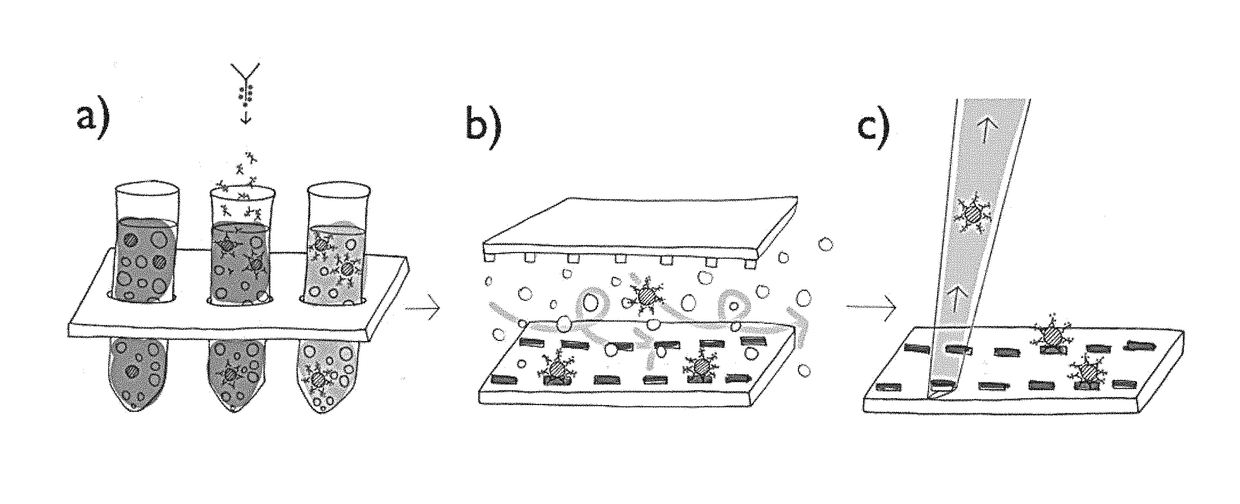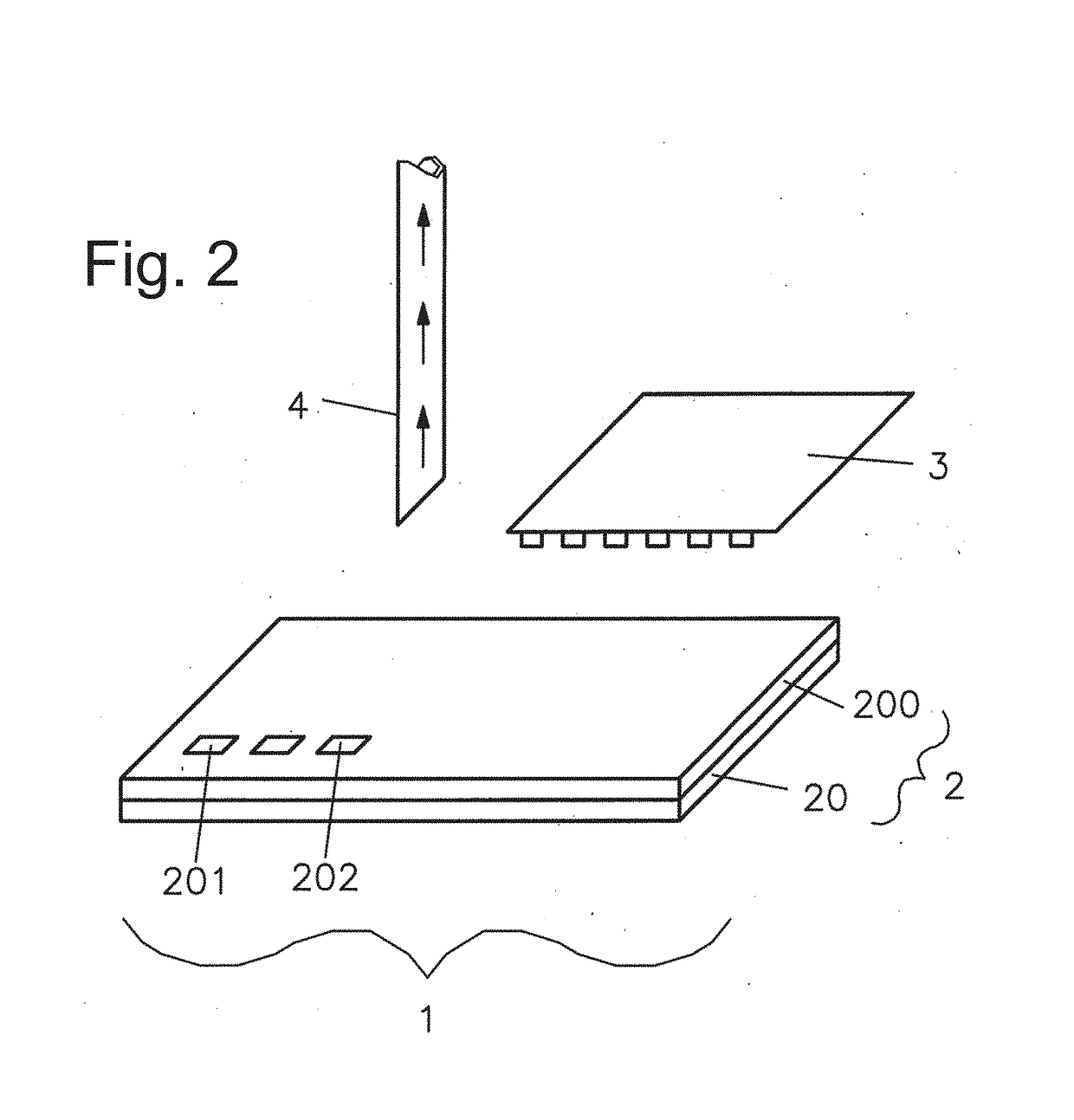Immobilization of cells or virus particles on protein structures using a microfluidic chamber
a technology of cell or virus particles and protein structures, which is applied in the field of immobilization of cells or virus particles on protein structures using a microfluidic chamber, can solve the problems of inability to reliably detect single cells, high demand, and inability to allow single cell analysis, and achieves high specificity, high binding efficiency, and high recovery.
- Summary
- Abstract
- Description
- Claims
- Application Information
AI Technical Summary
Benefits of technology
Problems solved by technology
Method used
Image
Examples
example 1
[0092]Design of a Microfluidic Chip and an Integrated Microarray
[0093]The capturing strategy presented here is based on a functional dot pattern combined with a microfluidic chaotic mixing system. A standard microscopy slide is coated with bovine serum albumin (BSA) to create both a passive and integrative interface: passive, as BSA prevents proteins and cells from unspecific binding; integrative, as fluorescein can bind covalently to BSA molecules induced by photobleaching. The latter is exploited to generate a chemisorbed dot pattern on the microscopy slide that is stable under streaming liquid condition. Lithography is carried out by polymer pen lithography (PPL), a high throughput technique with full pattern flexibility. FIG. 12A presents a schematic of the PPL process: a two dimensional array of polydimethylsiloxane (PDMS) pyramids is brought in contact with a piece of silicon coated with biotin-4-fluorescein acting as an ink pad. Capillary forces cause a wetting of the pens th...
example 2
[0095]Identification and Single Cell Extraction
[0096]Capture approaches based on microfluidic chips aim primarily at CTC quantification, however, immunocytochemistry and fluorescence in situ hybridization (FISH) can be conducted on captured cells inside these closed systems. Due to the three-dimensional inner architecture that is homogeneously coated with functional molecules captured CTCs cannot be extracted and individually investigated any further. Immobilizing CTCs on a plane surface has some advantages if further investigation needs to be performed. The approach taken in the present invention immobilizes cells exclusively on the functional micropattern; other surfaces like the herringbone-structured ceiling and the channel walls are passivated with BSA preventing cells to bind there. Having the captured CTCs on a flat surface allows picking single cells by a micromanipulator. FIG. 16A shows an overlay of fluorescence and brightfield micrographs that illustrates the picking proc...
example 3
[0099]Performance
[0100]The low quantity of CTCs in blood is a challenge for all capturing strategies. A relatively large blood volume of several mL needs to be processed to isolate usually some hundred CTCs. When facilitating specific surface proteins as CTC marker, all blood cells need to be brought in contact with an interacting surface. The first experiments to proof the stability and binding dynamics of the micropatterns have been performed with 100 μL cell suspension on cover slips. EpCAM micropatterns have been created by direct protein deposition and it was tried to incubate biotinylated EpCAM on a streptavidin array. However, both approaches did not show sufficient binding results during a short-term incubation of 15 minutes. By sensitizing targeting cells with biotinylated EpCAM one can take advantage of the strong affinity between streptavidin and biotin. Live-imaging experiments show that 80% of biotinylated cells are trapped on a streptavidin dot immediately after touchi...
PUM
| Property | Measurement | Unit |
|---|---|---|
| temperature | aaaaa | aaaaa |
| temperature | aaaaa | aaaaa |
| side length | aaaaa | aaaaa |
Abstract
Description
Claims
Application Information
 Login to View More
Login to View More - R&D
- Intellectual Property
- Life Sciences
- Materials
- Tech Scout
- Unparalleled Data Quality
- Higher Quality Content
- 60% Fewer Hallucinations
Browse by: Latest US Patents, China's latest patents, Technical Efficacy Thesaurus, Application Domain, Technology Topic, Popular Technical Reports.
© 2025 PatSnap. All rights reserved.Legal|Privacy policy|Modern Slavery Act Transparency Statement|Sitemap|About US| Contact US: help@patsnap.com



